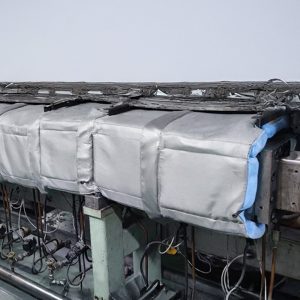
The Extruder is a machine that operates using both mechanical and thermal energy to create pressure and melt raw materials. During its working process, the machine continuously releases heat, causing energy loss when the machine's surface temperature is significantly higher than the surrounding environment. Heat is continuously transferred to the outside, which means the machine must constantly consume energy to maintain the production process temperature. This issue results in increased electricity costs, which are considered unnecessary production expenses.
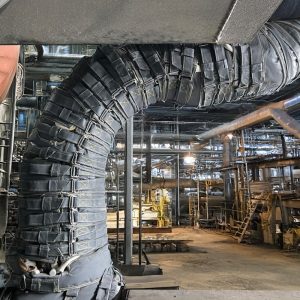
The plastic extrusion machine with diameters of 20 inches and 10 inches, with a total length of approximately 8 m, operates 24 hours per day for 26 days per month. Heat radiates throughout the working area where the machine is installed, causing employees in the area to experience heat stress. This also results in electrical energy waste from the machine's barrel surface during operation. Initially, users addressed the problem by wrapping and covering the heaters with ceramic fiber thermal insulation, but besides being unsightly, it caused itching and respiratory issues when workers had to handle these materials due to insulation dust inhalation.
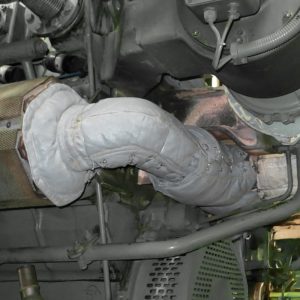
Heat generated from Gas Engines has multiple impacts, particularly the loss of thermal energy that could be utilized in the production process. Additionally, high temperatures affect the working environment, reducing the lifespan of surrounding equipment and increasing fire risks. Employees face unsuitable temperature conditions, which can lead to fatigue and occupational health and safety risks. Traditional thermal insulation systems typically consist of multiple layers that require time-consuming installation and removal. When engine maintenance or inspection is needed, technicians spend significant time removing and reinstalling the insulation system, resulting in extended downtime that impacts production capacity and operational costs.
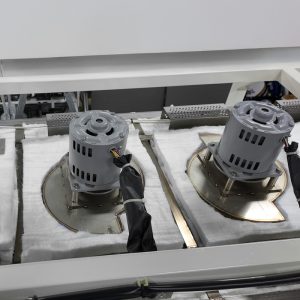
Problems and Causes
An electronics manufacturing company is facing significant heat loss issues in their production process, particularly with the Reflow Oven located in the cleanroom. The main cause is the lack of thermal insulation on the equipment, resulting in two major problems:
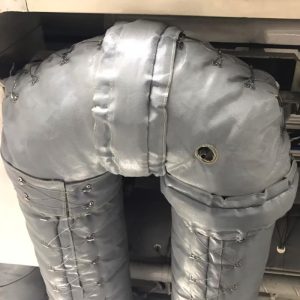
A shipyard is experiencing heat radiation problems from ship exhaust pipes and exhaust systems due to lack of thermal insulation. This has resulted in high heat accumulation in work areas, creating unsuitable working conditions. The hot pipe surfaces pose injury risks to workers through direct contact, reducing worker efficiency. The heat also affects engine performance, increases fire risks in the engine room, accelerates equipment deterioration, and results in higher-than-normal maintenance costs.
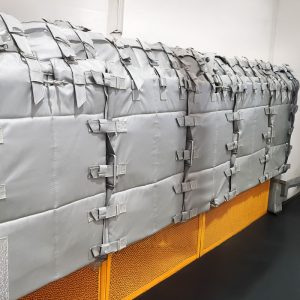
A Pre-Heat Oven with an external surface area of approximately 50 square meters, operating 24 hours per day for 30 days per month, created heat radiation problems affecting nearby workers, increasing room temperature, and causing unnecessary electricity consumption through heat loss. Although the oven was internally insulated, the internal temperature exceeding 200 degrees Celsius resulted in heat conduction to the external surface. During summer, workers near the oven experienced fatigue from heat stress.
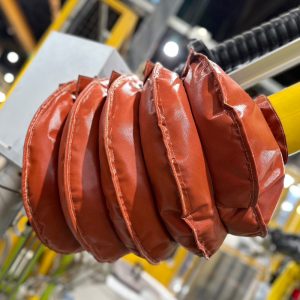
Robots in industrial factories play a crucial role in enhancing efficiency, precision, and safety in production processes. However, using robots in high-temperature environments can pose challenges to equipment durability. When robots operate near molten metal furnaces with extremely high heat, the wiring and joints of the robots tend to deteriorate faster than usual due to the heat radiating from the furnaces. This issue leads to unnecessary costs in the production process, such as frequent maintenance and a shortened lifespan of the robots.
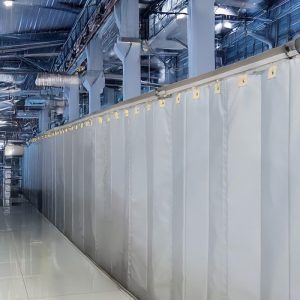
The oven is an equipment that uses heat processing to physically or chemically transform materials or products. Temperature is a critical factor directly affecting the quality of the workpiece, thus necessitating precise and consistent temperature control. However, heat from the oven significantly impacts the surrounding work area due to high-temperature heat radiating from the oven surface. In this production line, there are 12 ovens operating simultaneously, causing heat accumulation and extremely high temperatures in the work area. This issue greatly affects work efficiency, employee health, and safety, requiring urgent resolution.
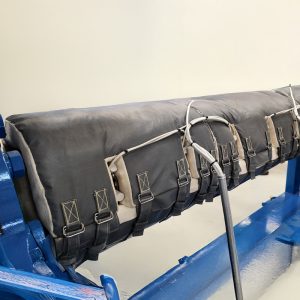
Plastic injection molding is a process that involves melting plastic into a liquid state and injecting it into a mold to create the desired shape. During operation, the machine emits heat continuously, causing the surrounding area to become excessively warm. The main cause of this heat is radiation from the heater's surface. The machine operates 12 hours a day, 26 days a month. This heat radiation not only poses safety risks for workers but also contributes to unnecessary production costs, particularly increased electricity bills due to heat energy loss.
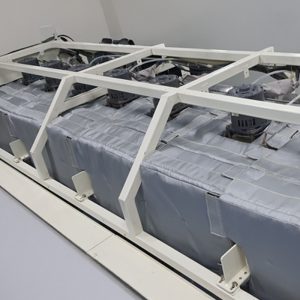
The Reflow Ovens used in the electronics industry become heat sources in air-conditioned rooms during operation because over 50% of the oven surface lacks efficient thermal insulation. This results in high workspace temperatures and constant strain on air conditioning units due to heat radiation from the oven surface. These issues lead to unnecessary production costs in two ways: 1) wasted electricity from heat radiation at the oven surface, and 2) excessive electricity consumption by room air conditioning units.
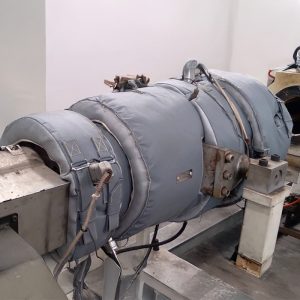
Based on the requirements specified by the extruder users, NTI recommended installing removable thermal insulation, a model that is water-resistant and can withstand chemicals or molten plastic flow, brand ZAVE® which is fire-retardant and asbestos-free. Since it needs to be removed and installed multiple times each month, they chose insulation with a density of 170 kg/m³ (high density) as it would be more durable and have a longer lifespan than general thermal insulation. This comes with a warranty for post-installation heat prevention efficiency, guaranteeing that the insulation surface temperature will not exceed 50 degrees Celsius.
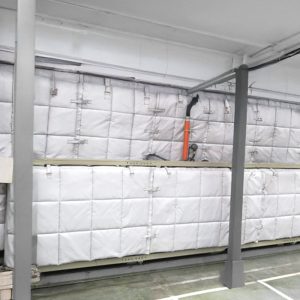
A large industrial oven used for metal part processing faced heat radiation issues from its surface area of 220 square meters. The average surface temperature ranged between 60-80 degrees Celsius, resulting in workspace temperatures consistently reaching 34-35 degrees Celsius during the oven's 24-hour daily operation, running 28 days per month. This heat radiation problem caused fatigue and loss of concentration among employees working near the oven. An initial solution of installing PVC curtains between the oven and workers actually made the situation worse by increasing the oven's surface temperature and electricity consumption, proving to be an ineffective solution to the core problem.